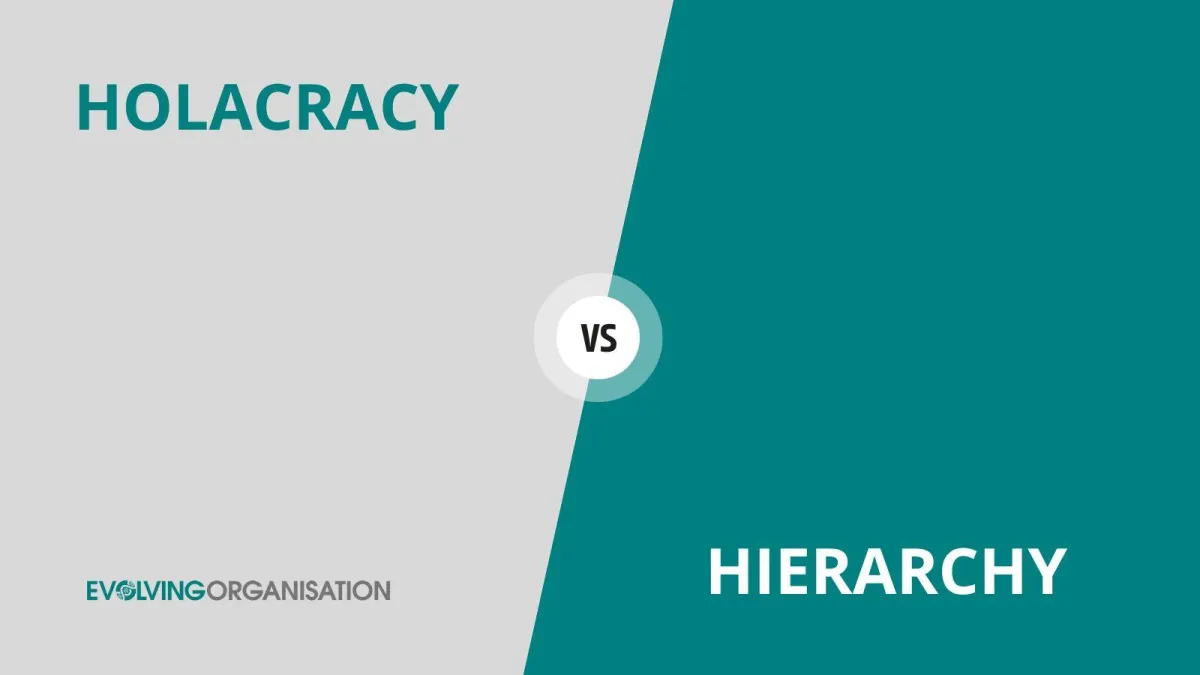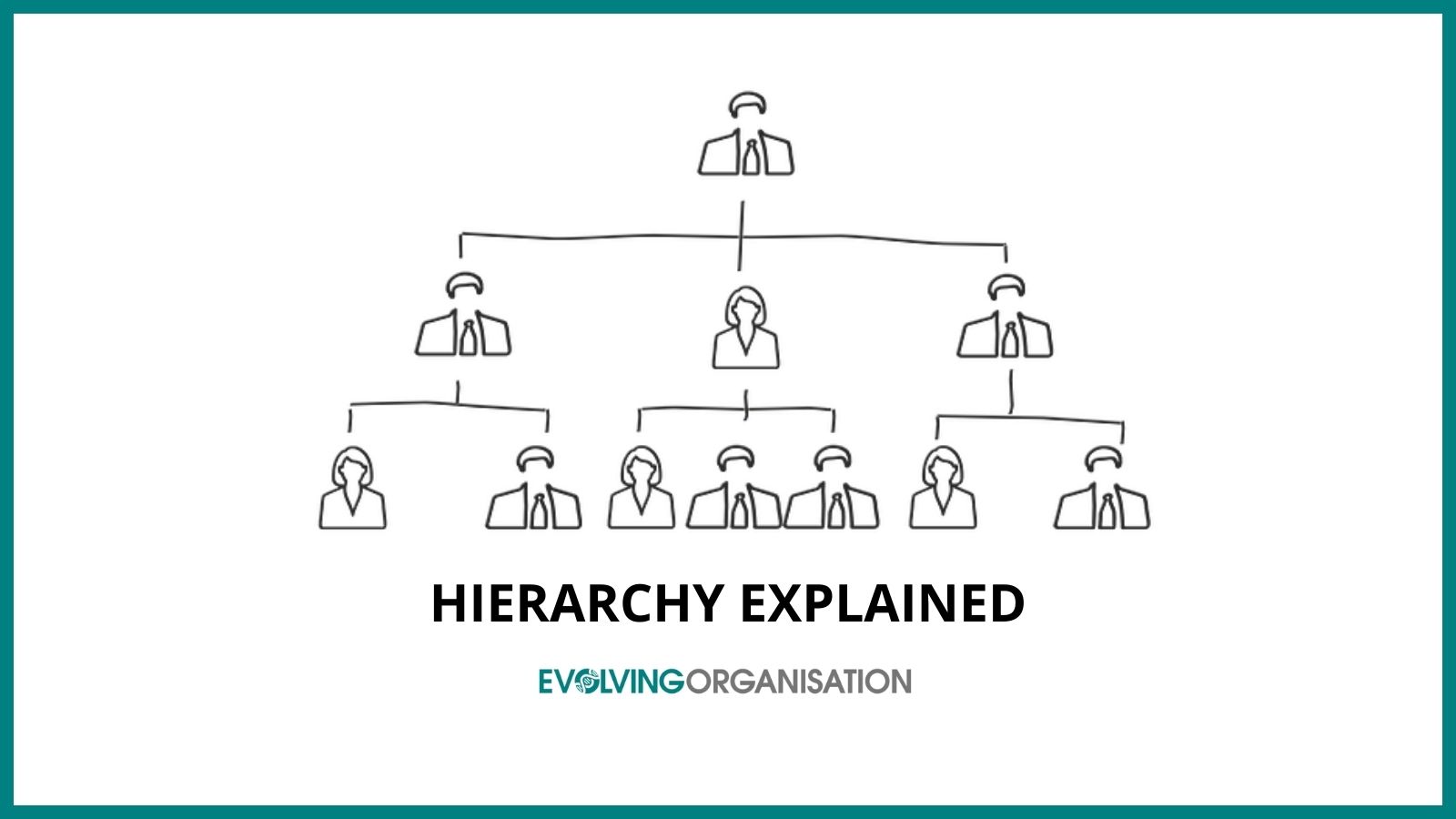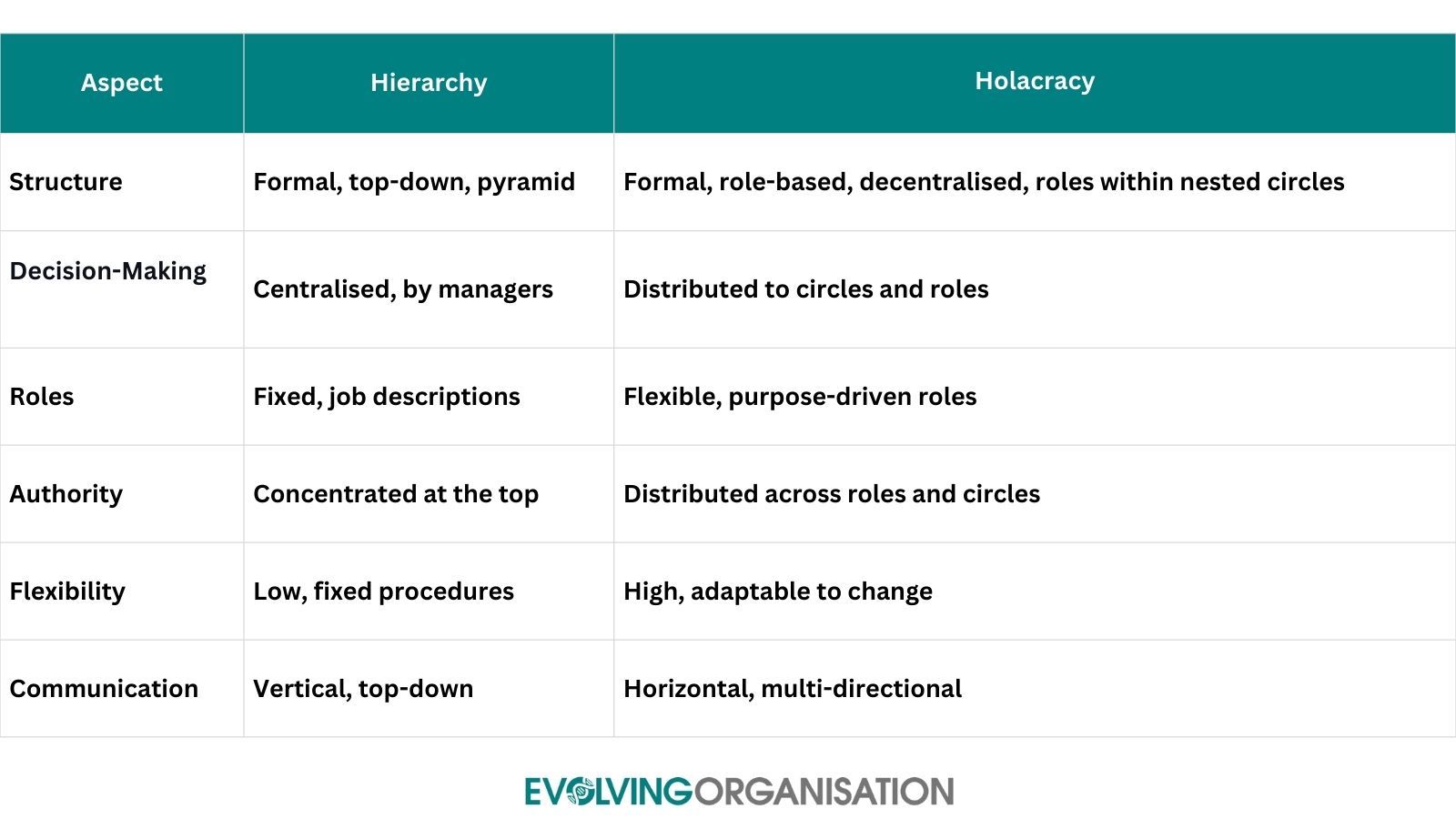
All You Need to Know About Holacracy vs Hierarchy
Understanding the differences between Holacracy and hierarchy is important for organisations considering moving beyond traditional management structures. Both aim to organise work efficiently and foster engagement, but they do so through fundamentally different frameworks.
This article compares these approaches, highlighting their key features, advantages, disadvantages, and real-world examples. It clarifies which system best suits organisations seeking agility, empowerment, and resilience in today's complex environment.
Holacracy Explained

Holacracy is a system of self-management that replaces traditional hierarchical structures with a set of clear roles, circles, and processes. See our article for a more complete introduction.
It distributes authority throughout the organisation, enabling teams to make decisions autonomously within their defined roles. The core of Holacracy is a structured process of governance meetings, where tensions are surfaced, roles are updated, and decisions are made collaboratively.
Key features include:
Defined roles with Purpose, Domains, and Responsibilities.
Circles are semi-autonomous units responsible for specific functions.
Regular governance and operational meetings.
Decision rights are embedded within roles and flow through circles.
Governed by a set of rules called the Holacracy Constitution.
How it works in practice:
In a holacratic organisation, decision-making happens at the role level, not through top-down directives. For example, a marketing circle may decide on campaign strategies independently, while governance meetings regularly update roles and resolve tensions. Authority flows through roles, not through a traditional chain of command.
Example:
Zappos adopted Holacracy to decentralise decision-making, promoting organisational autonomy and innovation.
Hierarchy Explained

Traditional hierarchy is a top-down organisational structure where authority is concentrated at the top. Managers assign tasks, oversee work, and make key decisions. Employees follow directives within their designated roles, with clear lines of authority and reporting relationships.
Key features include:
Clear chain of command.
Formal job descriptions.
Decisions made by managers or leaders.
Organisational power is concentrated at the top.
How it works in practice:
In a hierarchical organisation, managers allocate tasks, approve decisions, and may delegate authority to act or decide on their reports. Staff execute functions within their roles, and communication flows vertically. Meetings are often led by managers, with limited input from lower levels.
Wanna know What Holacracy Tactical Meeting are?
Example:
A manufacturing company with a strict chain of command where managers oversee production and staff follow instructions.
Comparison Table of Hierarchy and Holacracy

Advantages & Disadvantages
Holacracy
Advantages:
Promotes agility and rapid decision-making.
Clarifies roles, responsibilities, and authority.
Fosters transparency and accountability.
Empowers employees and increases engagement.
Disadvantages:
Complex to implement and sustain.
Requires cultural change and ongoing training.
Can be perceived as rigid due to structured processes.
Not suitable for organisations resistant to change.
Explore Our Complete Guide to Holacracy Pros and Cons
Hierarchy

Advantages:
Clear authority from the top down.
A well-understood system of managers with people reporting to them.
Efficient for routine operations and stability.
Easier to control and manage large organisations.
Disadvantages:
Slower decision-making.
Less responsive to change.
Can stifle innovation and initiative.
Risk of bureaucracy and silos.
Image of Holacracy vs Hierarchy
Image with thanks courtesy of JMitch
Challenges of Holacracy and Hierarchy
Holacracy
Difficult to implement in organisations resistant to cultural change.
It can create bureaucratic overhead if not adopted and used correctly.
Needs significant training and facilitation.
May face resistance from employees used to traditional hierarchies.
Hierarchy
Slows decision-making and responsiveness.
Limits innovation and initiative.
Creates silos and communication barriers.
Can lead to disengagement and low morale.
Examples
Hierarchy
Traditional manufacturing firms: Rely on transparent chains of command for efficiency.
Government agencies often operate within strict hierarchical frameworks.
Holacracy

Zappos: Transitioned to Holacracy to foster autonomy and innovation. While challenging, it resulted in a more engaged workforce.
Mercedes-Benz.io: Uses Holacracy to enable faster decision-making in digital teams.
Valsplat: Embraces Holacracy to shift beyond traditional hierarchies and empower teams.
Frequently Asked Questions (FAQs)
Q1: Is Holacracy suitable for all organisations?
Holacracy best suits organisations committed to decentralised decision-making, transparency, and cultural change. It is less appropriate for organisations resistant to shifting traditional power structures.
Q2: Can Holacracy be implemented in large corporations?
Yes, it can. Large organisations such as Mercedes-Benz.io have successfully adopted Holacracy. However, it requires a carefully planned transition, ongoing training, and a strong commitment to cultural change.
Q3: What role does leadership play in Holacracy?
Leadership is distributed throughout the organisation, empowering each person to lead their roles. The emphasis on leading people shifts from directing to facilitating. Leaders act as coaches and enablers, supporting semi-autonomous teams to self-manage and resolve tensions through structured processes. A circle's Circle Lead holds the authority to assign people into and out of roles and set strategies and priorities for a circle and its roles.
Q4: Are there any successful examples of Holacracy implementation?
Absolutely. Zappos, Mercedes-Benz.io, and Valsplat are prominent examples of how, when implemented thoughtfully, Holacracy can foster agility, transparency, and employee engagement.
---
This comparison of Holacracy and hierarchy highlights their fundamental differences and practical implications. Both are ways of running organisations, but in radically different ways, and their suitability depends on organisational culture, size, and readiness for change. Holacracy offers a powerful path to a more agile, engaged, and resilient organisation when implemented with clarity, training, and commitment.
Holacracy can be adopted in full, or the practices that suit a specific team or organisation can be adopted. If you are interested in embarking on this journey, we can help you assess your organisation's readiness and ensure you have the resources and mindset to sustain the change- take our free 10-minute Team Needs check here to find out if your Team has needs that this approach could help. Our Team Clarity & Faster Decision-Making program can help you fully or partially adopt Holacracy practices. With the right approach, such post-hierarchical ways of working can be a powerful tool for navigating today's complex and uncertain business landscape.
If you want to learn these practices in depth, programs like Team Clarity & Faster Decision-Making and The Meetings Revolution offer step-by-step guidance and practical tools to help your Team make these shifts confidently and effectively.
When you move beyond hierarchy and empower your Team to own their roles, communicate openly, and adapt quickly, you improve performance and create the foundation for lasting success in a fast-changing world.
---
This blog continues our commitment to improving performance and decision-making within organisations. Stay tuned for our next instalment, where we will explore a range of practical tools for this purpose.
Visit our website for more insights and resources. Together, let's evolve and adapt to the challenges of our dynamic world and build a better, more collaborative future.


